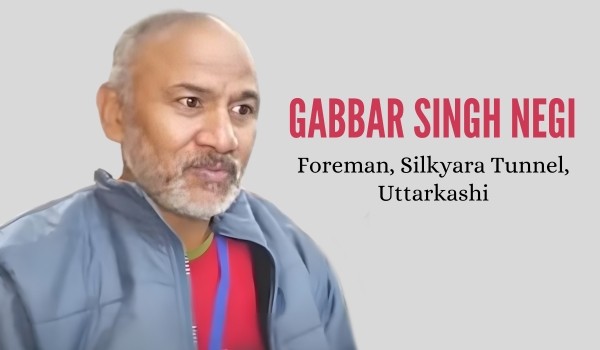On November 12, the auspicious day of Diwali, tragedy struck as 41 construction workers found themselves trapped inside the Silkyara tunnel in Uttarkashi due to an unexpected collapse. Their ordeal lasted 17 days, culminating in a successful rescue on November 28.
During this period, these labourers endured darkness, isolation, and the uncertainty of their fate. Their ordeal, however, served as an extraordinary display of human resilience and unwavering leadership, epitomised by Gabbar Singh Negi, the tunnel foreman.
Amidst the chaos and despair, Negi emerged as a beacon of hope and a pillar of strength for his fellow workers. His calm demeanour, decisive actions, and unwavering belief in their rescue were instrumental in maintaining order, ensuring safety, and fostering a sense of camaraderie among the trapped labourers. Negi’s leadership during this crisis provides valuable lessons for corporate India and serves as an inspiring case study for management schools.
Calm demeanour and decisiveness
Negi’s ability to remain calm and make quick decisions under immense pressure was crucial for maintaining order and ensuring the safety of the workers. He immediately established a sense of order, organising the workers into teams to maintain sanitation, ration supplies, and communicate with their families. His clear communication and regular updates kept the workers informed and engaged, preventing panic and despair from taking hold.
This highlights the importance of emotional intelligence and composure in leadership roles. Negi demonstrated how leaders need to be able to manage their own emotions and understand the emotions of others in order to effectively lead in crisis situations.
Negi’s effective communication was essential for keeping teams informed, maintaining morale, and preventing misunderstandings. His approach underscores the importance of transparent and consistent communication in fostering trust and cooperation within teams.
Effective communication and clarity
Negi’s clear and concise communication kept the labourers informed and maintained morale. He recognised the diversity of the workers, who came from different parts of India, and ensured that his communication was inclusive and accessible to all. He shared stories of resilience and survival, reminding the workers of their strength and the power of the human spirit. He also encouraged them to engage in activities that would take their minds off their predicament, such as singing, reciting poetry, and practicing yoga. These morale-boosting measures helped to keep the workers’ spirits afloat and maintain a sense of camaraderie.
Negi’s effective communication was essential for keeping teams informed, maintaining morale, and preventing misunderstandings. His approach underscores the importance of transparent and consistent communication in fostering trust and cooperation within teams.
Empathy and compassion: leading with humanity
Negi’s empathy and compassion towards the labourers helped them cope with the emotional stress of the situation. He understood the fears and concerns of the workers, and he provided them with emotional support and reassurance. He reminded them that they were not alone, fostering a sense of community and shared purpose.
This underscores the significance of emotional intelligence and empathy in leadership, enabling leaders to connect with and support their team members. Negi’s actions demonstrate that leaders who show empathy and compassion can create a more supportive and inclusive work environment, fostering trust and loyalty among team members.
Hope and unwavering belief: inspiration through adversity
Negi’s unwavering belief in the labourers’ rescue and his ability to instill that belief in them were crucial in maintaining their spirits. Throughout the 17 days that the workers were trapped, Negi never gave up hope for their rescue. He maintained a positive outlook and encouraged them to persevere, demonstrating the power of hope in overcoming challenges. His unwavering belief in their eventual safe return became a source of strength and inspiration for the workers.
This highlights the power of hope and optimism in leadership, inspiring and motivating others to persevere through challenges. Leaders who maintain a positive outlook and inspire hope can motivate their teams to overcome challenges and achieve success.
Conclusion: a legacy of leadership
The rescue operation was a complex and challenging one, but thanks to Negi’s leadership, all 41 workers were safely evacuated on November 28th, 2023. Their ordeal served as a testament to the power of human resilience and the importance of strong leadership in times of crisis. Negi’s actions have set an example of how to lead with courage, empathy, and determination in the face of adversity. His unwavering commitment to the well-being of his fellow workers serves as a beacon of inspiration for leaders in all walks of life.



